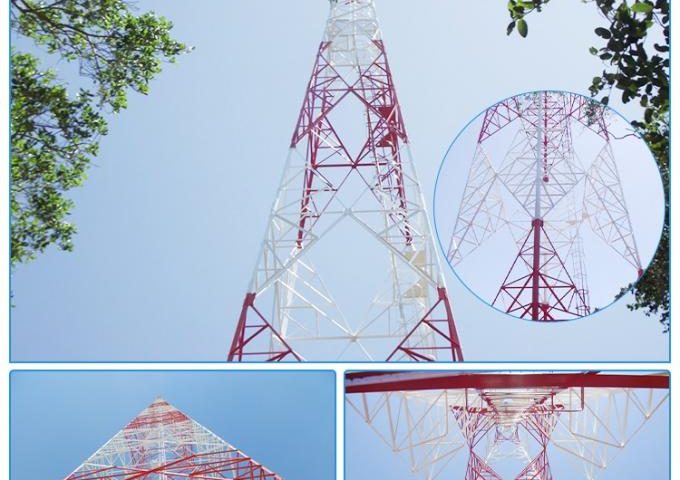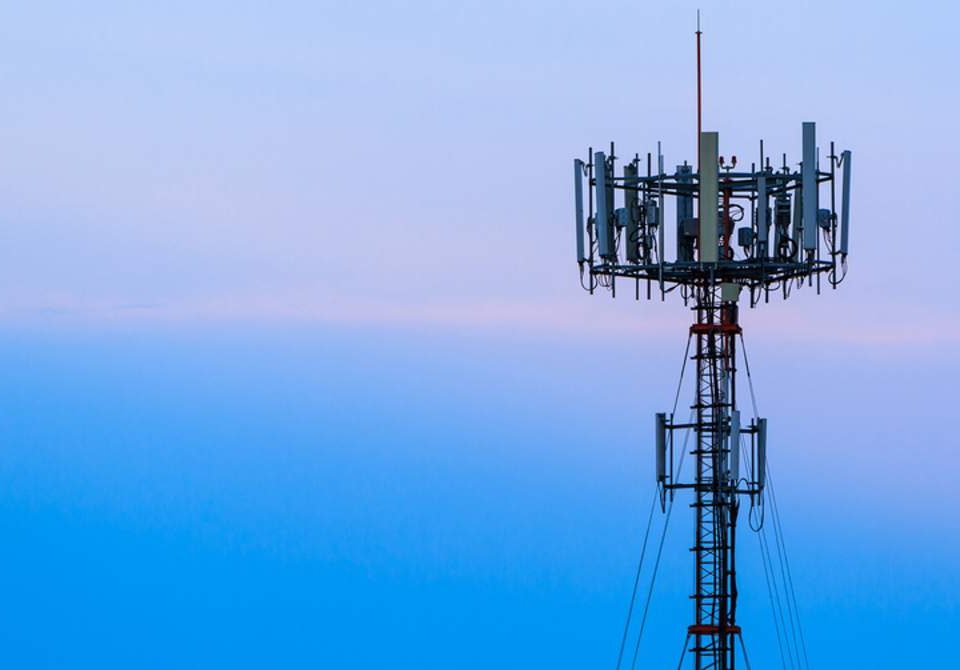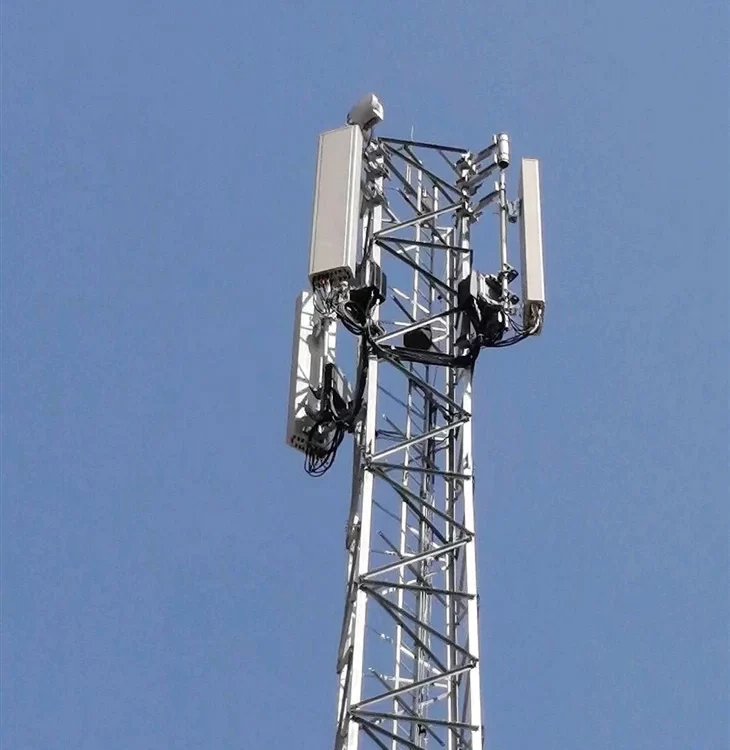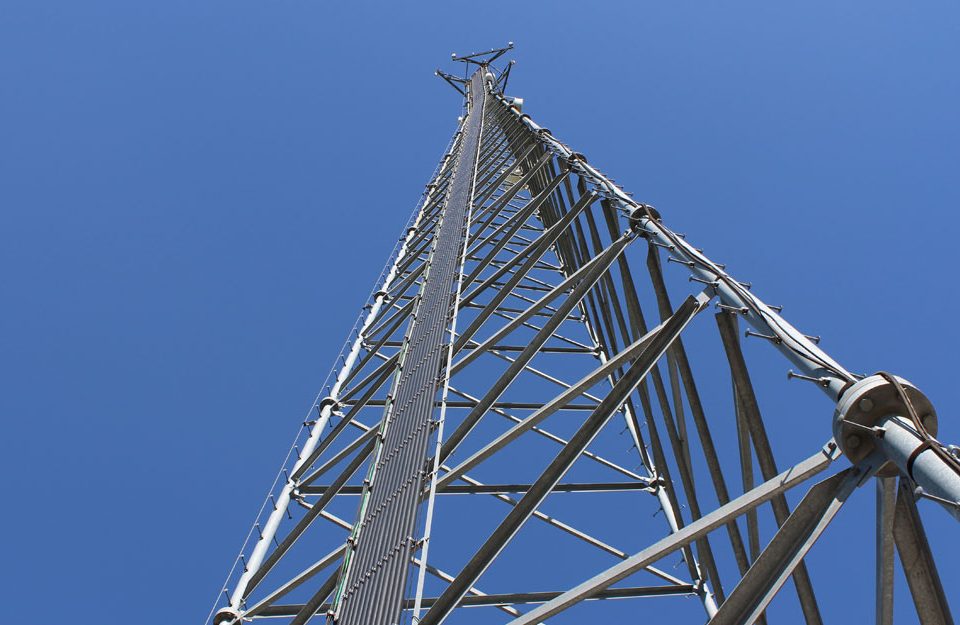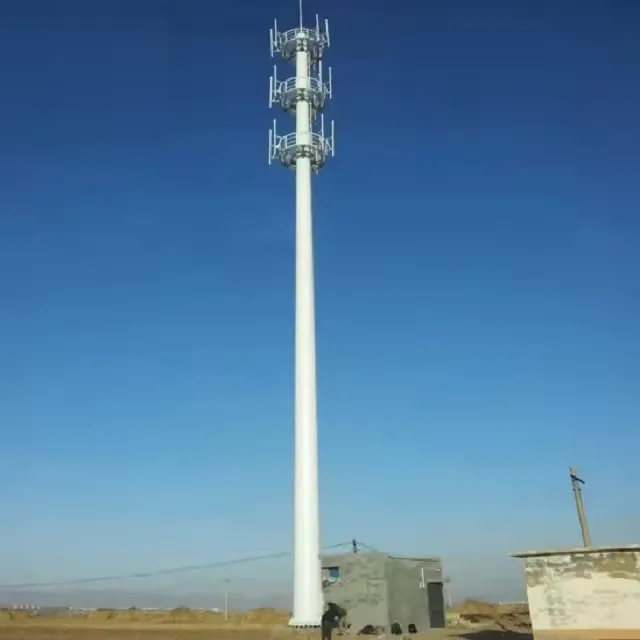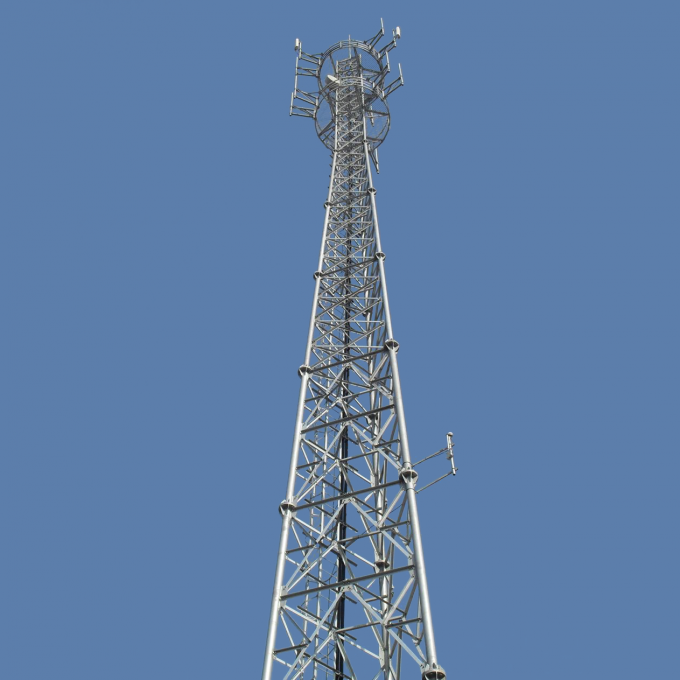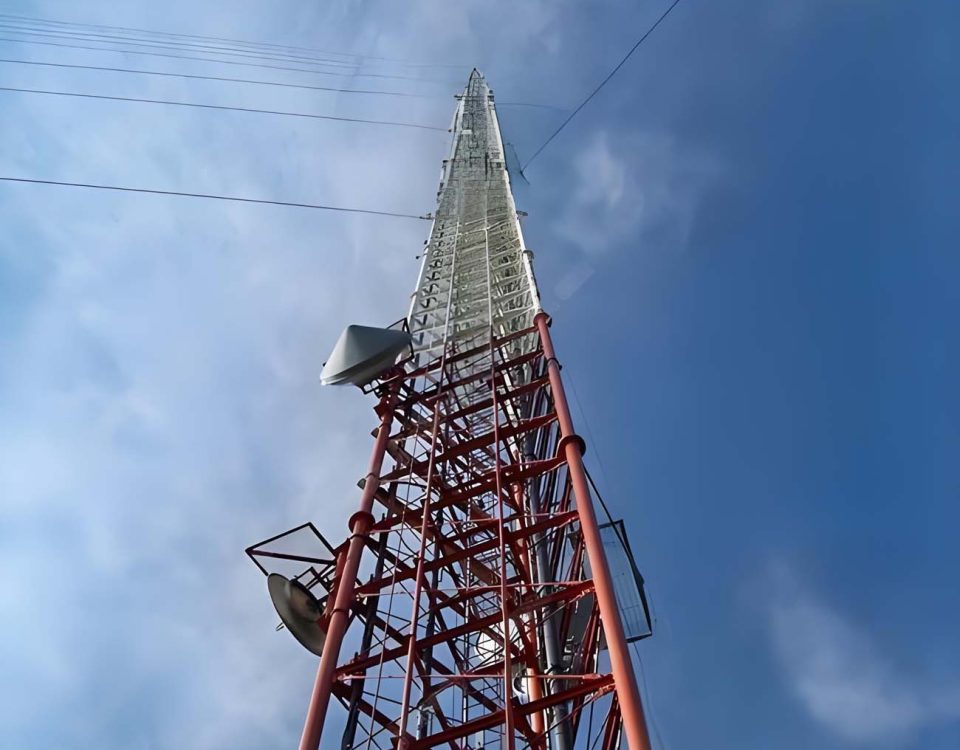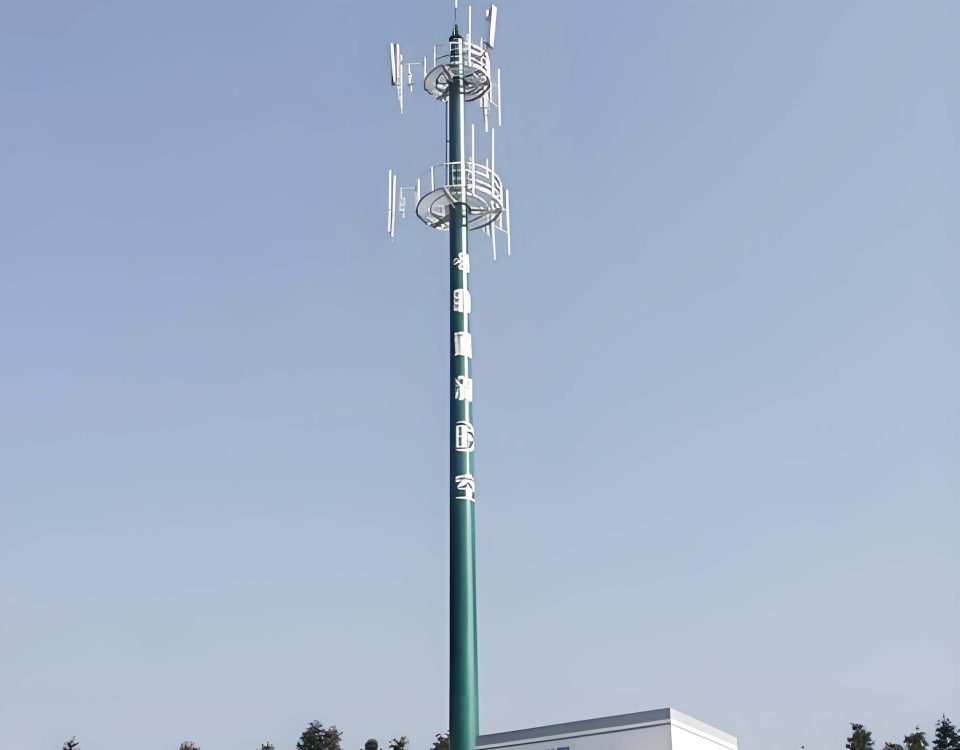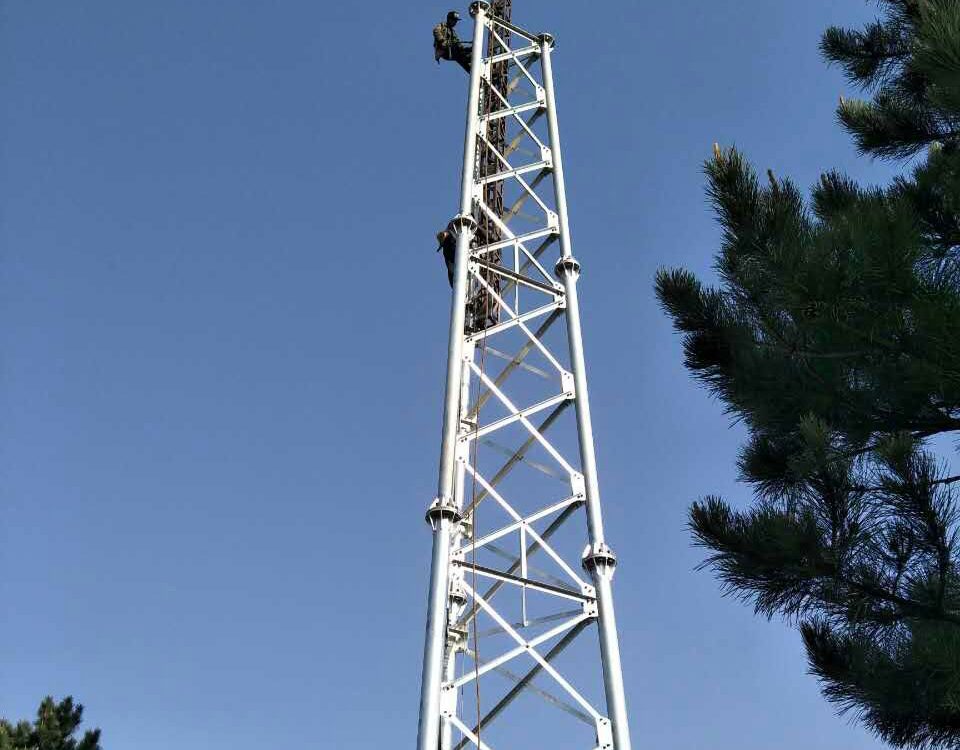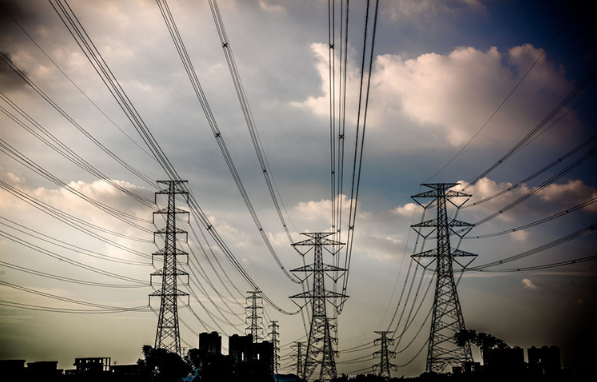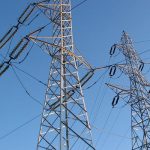
Nonlinear Performance Analysis of Steel Lattice Energy Distribution Towers
October 23, 2024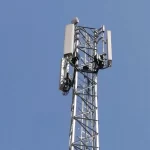
Galvanized Steel Lattice Telecom Tower
November 13, 2024Communication Antenna Self-Supporting WiFi Steel Tower
Comprehensive Guide to Communication Antenna Self-Supporting WiFi Steel Tower
Introduction
In the modern world, communication infrastructure plays a critical role in connecting people, businesses, and devices. One of the essential components of this infrastructure is the communication antenna tower, which supports various wireless technologies, including WiFi, cellular networks, and broadcasting systems. Among the different types of communication towers, self-supporting steel towers are widely used due to their structural stability, durability, and ability to support heavy loads.
This comprehensive guide will focus on self-supporting WiFi steel towers, exploring their design, materials, types, and applications. We will also provide detailed tables to help you understand the key specifications of these towers, including height, load capacity, and wind resistance. By the end of this guide, you will have a thorough understanding of the importance of self-supporting steel towers in the communication industry and how to select the right tower for your specific needs.
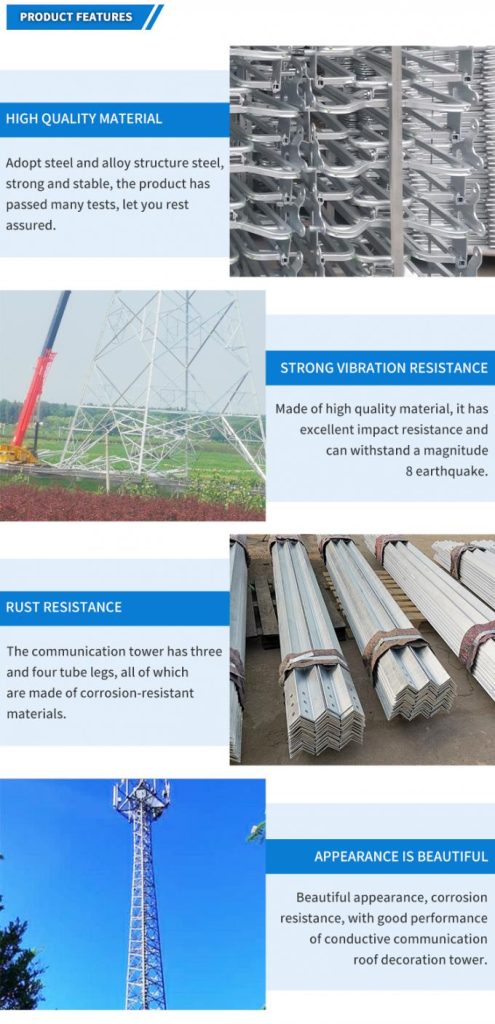
What is a Self-Supporting WiFi Steel Tower?
A self-supporting steel tower is a free-standing structure designed to support communication antennas, including those used for WiFi, cellular networks, and radio broadcasting. These towers are typically made of galvanized steel or stainless steel and are constructed in a lattice or tubular design to provide maximum strength and stability.
Unlike guyed towers, which require external support cables, self-supporting towers rely solely on their structural integrity to remain upright. This makes them ideal for locations where space is limited, as they do not require large areas for guy wires.
Key Features of Self-Supporting WiFi Steel Towers
- Durability: Made from high-quality steel, these towers are resistant to corrosion, weathering, and environmental stress.
- Stability: The lattice or tubular design provides excellent stability, even in high-wind or seismic zones.
- Load Capacity: Self-supporting towers can support multiple antennas and heavy communication equipment.
- Space Efficiency: These towers do not require guy wires, making them suitable for urban areas or locations with limited space.
Types of Self-Supporting Steel Towers
Self-supporting steel towers come in various designs, each suited to different applications and environmental conditions. The most common types of self-supporting towers include:
1. Lattice Towers
Lattice towers are the most common type of self-supporting tower. They are constructed from a network of steel bars arranged in a triangular or square pattern, forming a lattice structure. This design provides excellent strength-to-weight ratio and stability, making lattice towers ideal for supporting multiple antennas and heavy communication equipment.
- Advantages:
- High load capacity
- Excellent wind resistance
- Suitable for tall structures (up to 100 meters or more)
- Cost-effective for large-scale installations
- Applications:
- WiFi networks
- Cellular networks
- Radio and television broadcasting
2. Monopole Towers
Monopole towers are single-pole structures made from steel or concrete. Unlike lattice towers, monopole towers have a solid, cylindrical design, making them more aesthetically pleasing and easier to install in urban environments. However, they have a lower load capacity compared to lattice towers.
- Advantages:
- Space-efficient design
- Aesthetically pleasing for urban areas
- Easier and faster to install compared to lattice towers
- Applications:
- Urban WiFi networks
- Small-scale cellular networks
- Surveillance and security systems
3. Tubular Towers
Tubular towers are similar to monopole towers but are constructed from hollow steel tubes. These towers offer a balance between the load capacity of lattice towers and the space efficiency of monopole towers. Tubular towers are often used in areas where aesthetics and load capacity are both important considerations.
- Advantages:
- Good load capacity
- Space-efficient design
- Suitable for medium-height installations
- Applications:
- WiFi networks
- Cellular networks
- Broadcasting systems
4. Hybrid Towers
Hybrid towers combine elements of lattice and monopole designs to provide a balance between load capacity, stability, and space efficiency. These towers are often used in areas where both aesthetics and functionality are important.
- Advantages:
- High load capacity
- Space-efficient design
- Suitable for both urban and rural installations
- Applications:
- WiFi and cellular networks
- Broadcasting systems
- Security and surveillance systems
Materials Used in Self-Supporting Steel Towers
The materials used in the construction of self-supporting steel towers play a crucial role in determining their durability, strength, and resistance to environmental factors. The most common materials used in these towers include:
1. Galvanized Steel
Galvanized steel is the most widely used material for self-supporting towers due to its excellent corrosion resistance and durability. The steel is coated with a layer of zinc, which protects it from rust and corrosion, even in harsh environments.
- Advantages:
- Excellent corrosion resistance
- Long lifespan (up to 50 years or more)
- Cost-effective
- Applications:
- WiFi and cellular towers in coastal or industrial areas
- Towers exposed to harsh weather conditions
2. Stainless Steel
Stainless steel is another popular material for self-supporting towers, especially in environments where corrosion resistance is critical. Stainless steel contains chromium, which forms a protective oxide layer on the surface, preventing rust and corrosion.
- Advantages:
- Superior corrosion resistance
- High strength and durability
- Aesthetic appearance
- Applications:
- Urban WiFi towers
- Towers in corrosive environments (e.g., chemical plants, coastal areas)
3. Concrete
In some cases, concrete is used for the base or foundation of self-supporting towers, especially for monopole designs. Concrete provides excellent stability and strength, making it suitable for supporting tall structures.
- Advantages:
- High strength and stability
- Resistant to environmental stress
- Suitable for tall towers
- Applications:
- Monopole towers
- Towers in seismic zones
Design Considerations for Self-Supporting WiFi Steel Towers
When designing a self-supporting WiFi steel tower, several factors must be considered to ensure the tower’s stability, durability, and ability to support the required load. These factors include:
1. Height
The height of the tower is one of the most critical design considerations, as it determines the tower’s ability to provide coverage over a wide area. Taller towers are required for long-range communication, while shorter towers are suitable for local or urban networks.
- Typical Heights:
- Small-scale WiFi networks: 10-30 meters
- Cellular networks: 30-60 meters
- Broadcasting systems: 60-100 meters or more
2. Load Capacity
The load capacity of the tower refers to its ability to support the weight of antennas, cables, and other communication equipment. The load capacity is influenced by the tower’s design, materials, and height.
- Typical Load Capacities:
- Small-scale WiFi towers: 100-500 kg
- Cellular towers: 500-2000 kg
- Broadcasting towers: 2000 kg or more
3. Wind Resistance
Wind resistance is a critical factor in the design of self-supporting towers, especially in areas prone to high winds or hurricanes. The tower must be able to withstand wind loads without collapsing or suffering structural damage.
- Wind Resistance Ratings:
- Low-wind areas: 100-120 km/h
- Moderate-wind areas: 120-150 km/h
- High-wind areas: 150-200 km/h or more
4. Seismic Resistance
In seismic zones, the tower must be designed to withstand the forces generated by earthquakes. This requires careful consideration of the tower’s foundation, materials, and structural design.
- Seismic Resistance Ratings:
- Low-seismic areas: Zone 1-2
- Moderate-seismic areas: Zone 3-4
- High-seismic areas: Zone 5
5. Aesthetics
In urban areas, the appearance of the tower is an important consideration. Monopole and tubular towers are often preferred in these environments due to their sleek, modern design.
6. Maintenance and Accessibility
The tower must be designed to allow easy access for maintenance and repairs. This includes providing ladders, platforms, and safety features to ensure that technicians can safely access the antennas and equipment.
Table 1: Typical Specifications for Self-Supporting WiFi Steel Towers
| Tower Type | Height (m) | Load Capacity (kg) | Wind Resistance (km/h) | Seismic Resistance | Material |
|---|---|---|---|---|---|
| Lattice Tower | 30-100 | 1000-5000 | 150-200 | Zone 3-5 | Galvanized Steel |
| Monopole Tower | 10-50 | 500-2000 | 120-150 | Zone 1-3 | Stainless Steel |
| Tubular Tower | 20-60 | 800-3000 | 130-180 | Zone 2-4 | Galvanized Steel |
| Hybrid Tower | 30-80 | 1000-4000 | 140-190 | Zone 3-5 | Galvanized/Stainless Steel |
Applications of Self-Supporting WiFi Steel Towers
Self-supporting WiFi steel towers are used in a wide range of industries and applications, including:
1. WiFi Networks
Self-supporting towers are commonly used to support WiFi antennas in both urban and rural areas. These towers provide the height and stability needed to ensure reliable WiFi coverage over large areas.
- Applications:
- Public WiFi networks in cities and towns
- WiFi coverage in rural areas
- WiFi networks for schools, universities, and campuses
2. Cellular Networks
Cellular networks rely on self-supporting towers to support antennas for 4G, 5G, and other wireless technologies. These towers are essential for providing reliable cellular coverage, especially in remote areas.
- Applications:
- Cellular towers for 4G and 5G networks
- Towers for rural and remote cellular coverage
- Towers for mobile network operators
3. Broadcasting Systems
Self-supporting towers are used to support antennas for radio and television broadcasting. These towers must be tall and stable to ensure that the broadcast signal reaches a wide audience.
- Applications:
- Radio broadcasting towers
- Television broadcasting towers
- Towers for digital and satellite broadcasting
4. Surveillance and Security Systems
Self-supporting towers are used to support surveillance cameras, radar systems, and other security equipment. These towers provide the height and stability needed for effective surveillance over large areas.
- Applications:
- Surveillance towers for airports and seaports
- Security towers for military bases and government facilities
- Towers for radar and communication systems
5. Emergency Communication Systems
In disaster-prone areas, self-supporting towers are used to support emergency communication systems. These towers ensure that communication remains operational during emergencies, such as hurricanes, earthquakes, and floods.
- Applications:
- Emergency communication towers for disaster response
- Towers for public safety communication systems
- Towers for emergency broadcast systems
Table 2: Common Applications of Self-Supporting WiFi Steel Towers
| Application | Typical Tower Type | Height (m) | Load Capacity (kg) | Wind Resistance (km/h) |
|---|---|---|---|---|
| WiFi Networks | Monopole, Tubular | 10-30 | 500-1000 | 120-150 |
| Cellular Networks | Lattice, Monopole | 30-60 | 1000-3000 | 150-200 |
| Radio and TV Broadcasting | Lattice, Hybrid | 60-100 | 2000-5000 | 150-200 |
| Surveillance and Security | Monopole, Tubular | 10-40 | 500-1500 | 120-180 |
| Emergency Communication Systems | Lattice, Hybrid | 30-80 | 1000-4000 | 150-200 |
Installation and Maintenance of Self-Supporting WiFi Steel Towers
The installation and maintenance of self-supporting WiFi steel towers require careful planning and execution to ensure the tower’s stability, safety, and longevity. The key steps involved in the installation and maintenance process include:
1. Site Selection
The first step in the installation process is selecting the appropriate site for the tower. The site must provide sufficient space for the tower’s foundation and ensure that the tower will not interfere with nearby structures or communication systems.
2. Foundation Construction
The foundation is critical to the stability of the tower. For self-supporting towers, the foundation is typically made of reinforced concrete and must be designed to withstand the forces generated by wind, seismic activity, and the weight of the tower and equipment.
3. Tower Erection
Once the foundation is complete, the tower is erected using cranes and other heavy equipment. The tower sections are assembled and bolted together, and the antennas and communication equipment are installed.
4. Cable and Equipment Installation
After the tower is erected, the communication cables and equipment are installed. This includes attaching the antennas, running the cables, and connecting the equipment to the network.
5. Regular Maintenance
To ensure the tower remains operational, regular maintenance is required. This includes inspecting the tower for structural damage, checking the condition of the antennas and cables, and performing any necessary repairs.
Table 3: Installation and Maintenance Checklist for Self-Supporting WiFi Steel Towers
| Task | Frequency | Description |
|---|---|---|
| Site Selection | Pre-installation | Select a site with sufficient space, minimal interference, and proper zoning. |
| Foundation Construction | Pre-installation | Build a reinforced concrete foundation to support the tower’s weight and forces. |
| Tower Erection | Installation | Assemble and erect the tower using cranes and heavy equipment. |
| Cable and Equipment Installation | Installation | Install antennas, cables, and communication equipment. |
| Structural Inspection | Annually | Inspect the tower for signs of corrosion, damage, or structural issues. |
| Antenna and Cable Inspection | Every 6 months | Check the condition of antennas and cables for wear, damage, or misalignment. |
| Wind and Seismic Resistance Test | Every 5 years | Test the tower’s ability to withstand wind and seismic forces. |
Conclusion
Self-supporting WiFi steel towers are essential components of modern communication infrastructure, providing the stability, durability, and load capacity needed to support a wide range of communication technologies. Whether used for WiFi networks, cellular networks, broadcasting systems, or surveillance systems, these towers play a critical role in ensuring reliable communication in both urban and rural areas.
By understanding the different types of self-supporting towers, their materials, design considerations, and applications, you can make informed decisions when selecting the right tower for your specific needs. Additionally, proper installation and regular maintenance are essential to ensuring the tower’s longevity and performance.
FAQ
What is the difference between a lattice tower and a monopole tower?
A lattice tower is a free-standing structure made from a network of steel bars arranged in a triangular or square pattern, providing high load capacity and wind resistance. A monopole tower is a single-pole structure with a cylindrical design, offering a more space-efficient and aesthetically pleasing option, but with a lower load capacity compared to lattice towers.
How tall can a self-supporting WiFi steel tower be?
Self-supporting WiFi steel towers can range in height from 10 meters to over 100 meters, depending on the application and coverage requirements. Taller towers are typically used for broadcasting systems, while shorter towers are used for WiFi and cellular networks.
What materials are used to construct self-supporting towers?
The most common materials used in self-supporting towers are galvanized steel and stainless steel. Galvanized steel is widely used due to its corrosion resistance and durability, while stainless steel is preferred in environments where superior corrosion resistance is required.
How do I maintain a self-supporting WiFi steel tower?
Regular maintenance of a self-supporting tower includes inspecting the structure for corrosion or damage, checking the condition of antennas and cables, and testing the tower’s wind and seismic resistance. Maintenance should be performed annually or more frequently in harsh environments.
What are the key factors to consider when selecting a self-supporting tower?
Key factors to consider include the height, load capacity, wind resistance, seismic resistance, and aesthetic considerations of the tower. Additionally, the location and environmental conditions should be taken into account when selecting the appropriate tower type and material.

